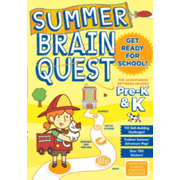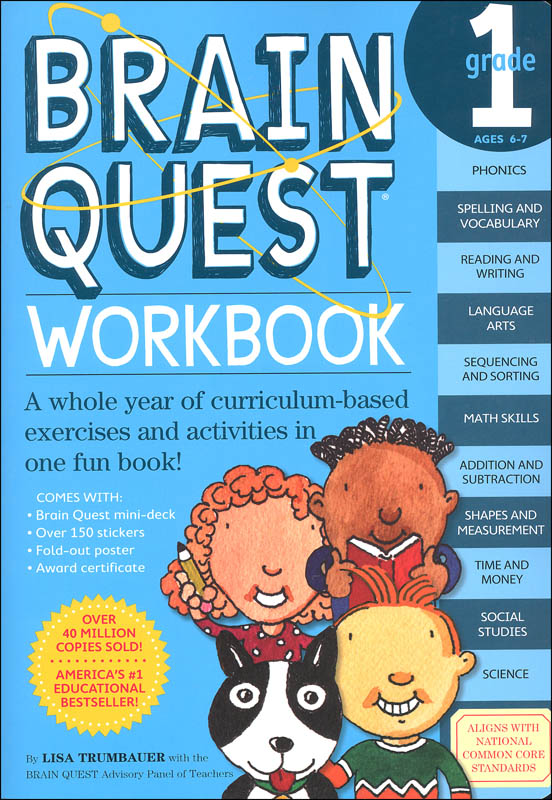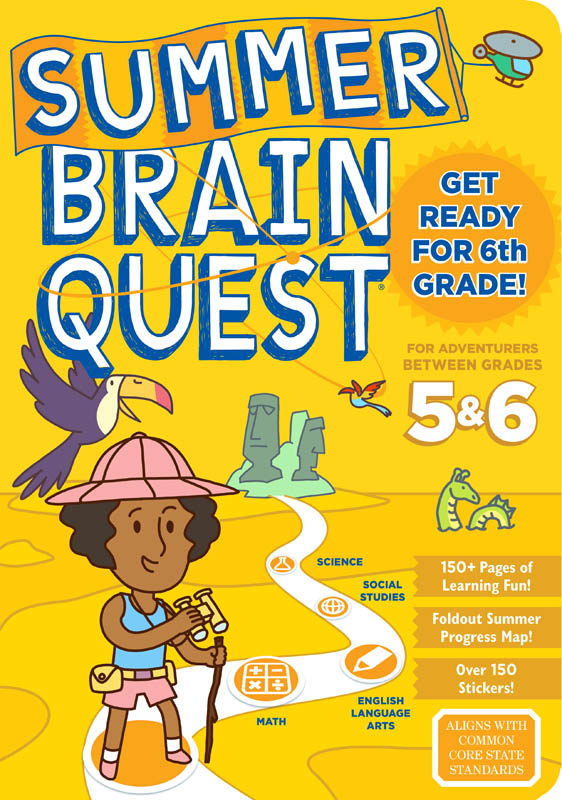Brain Quest products have been on the market since at least the 1990s. However, their products have been updated and revised a number of times to keep current with educational standards and the needs of students, so they are better than ever.
Brain Quest first caught my attention years ago with their decks of question cards that could be used for educationally-oriented trivia games. They still publish these decks in updated formats, and they also publish two series of supplemental workbooks, one series for the regular school year and another for summer.
Decks
 Decks are sets of tall, colorful cards (2.5” x 7”) that are connected with a riveted brad. Cards can be fanned out or moved to the side as needed, but they stay together. There are two such decks in each boxed deck so that two teams or two players can easily compete. Every card is printed on both sides. From three to ten questions are printed on each card (fewer questions for younger children). The following card in the deck has the answers to those questions. Flip the deck over, and entirely new sets of questions and answers are on the cards now facing you.
Decks are sets of tall, colorful cards (2.5” x 7”) that are connected with a riveted brad. Cards can be fanned out or moved to the side as needed, but they stay together. There are two such decks in each boxed deck so that two teams or two players can easily compete. Every card is printed on both sides. From three to ten questions are printed on each card (fewer questions for younger children). The following card in the deck has the answers to those questions. Flip the deck over, and entirely new sets of questions and answers are on the cards now facing you.
The number of type of questions varies from deck to deck. There are age or grade level decks for toddlers up through seventh grade. Grade level decks include questions from math, language arts, science, history, geography, civics, and miscellaneous topics. Many of the questions reflect content aligned with what students are learning at each grade level, so they are intended to reinforce the core curriculum.
Decks for pre-readers used pictures rather than words, and they address learning readiness topics appropriate for young children. Subject-specific decks for reading or for math are available with separate decks for grades one, two, and three for each subject. Three other decks–For the Car, Presidents, and America–all relate to United States history and geography.
Preschool decks have from 300 to 350 questions each while other decks range from 750 to 1,500 questions. Reading decks each feature 56 stories with questions and answers—a different format than the other decks.
Decks can be used just for fun without keeping score. Decks for children past kindergarten level can be used by teams or by two players who take turns quizzing each other. You can use a game board, a white board, or a pad of paper to keep score.
The flexibility makes it easy to find ways to use these.
Workbooks
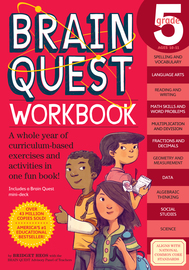 Brain Quest workbooks for pre-kindergarten through grade six are each designed to closely reflect educational standards for each level. As with the decks, the workbooks concentrate on early-learning skills in preschool and kindergarten, then advance into core skills for math, reading, and writing. While those subjects receive the most attention, there are also pages for science and social studies. While coverage of all topics is necessarily selective, there are more than 300 pages per book.
Brain Quest workbooks for pre-kindergarten through grade six are each designed to closely reflect educational standards for each level. As with the decks, the workbooks concentrate on early-learning skills in preschool and kindergarten, then advance into core skills for math, reading, and writing. While those subjects receive the most attention, there are also pages for science and social studies. While coverage of all topics is necessarily selective, there are more than 300 pages per book.
Essentially, these are collections of worksheets for each grade level. However, they are much more attractively presented than typical worksheets. Full-color illustrations and graphics are always placed against a colored-backdrop page. The books have color-coded pages for each topic; for example, in the Grade 5 book, reading comprehension pages are purple, writing pages are blue, multiplication and division pages are orange—twelve color-coded sections in all.
These workbooks are designed to reinforce classroom instruction rather than to serve as your primary teaching resource. However, “Brain Box” sidebars on the bottom of many pages offer instructional information if a student has forgotten or is unfamiliar with a concept.
As a bonus, at the back of each book are a few pages with a Brain Quest mini-deck. These pages have smaller versions of the decks of cards with questions and answers. They can be cut out and used as you would the regular decks.
You will get the most out of each of these books if you take the time to locate appropriate pages to assign under the different topical areas rather than having students work through pages either in order or randomly.
Summer Brain Quest
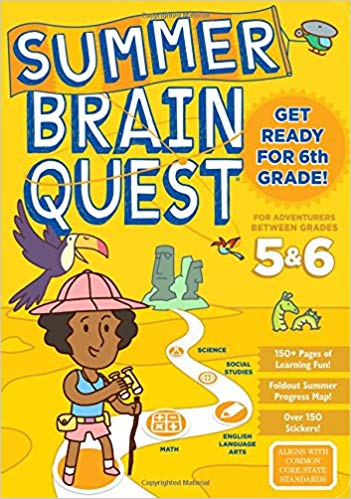 Summer Brain Quest books are scaled-down versions of the regular workbooks that are designed to keep academic skills sharp over the summer months. With 160 pages, each book is identified with two grade levels from their Pre-K & K book through 5 & 6. Books are intended to be used during the summer between those two grade levels. Thus, for example, the book 2 & 3 should be used after second grade, and the book 3 & 4 should be used after third grade.
Summer Brain Quest books are scaled-down versions of the regular workbooks that are designed to keep academic skills sharp over the summer months. With 160 pages, each book is identified with two grade levels from their Pre-K & K book through 5 & 6. Books are intended to be used during the summer between those two grade levels. Thus, for example, the book 2 & 3 should be used after second grade, and the book 3 & 4 should be used after third grade.
Like the workbooks, Summer Brain Quest books are very colorful and attractive. Books include a summer reading list, stickers to be used with a map to chart progress, suggested outside activities, and a Brain Quest mini-deck.





